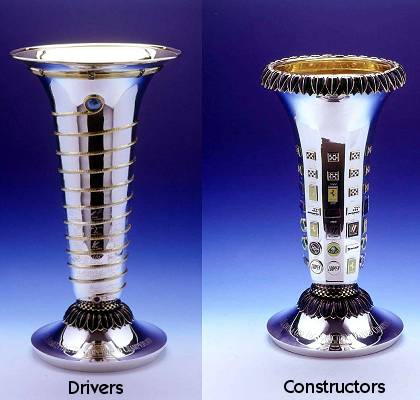If u were to ask an audiophile the importance of a Head Unit, you would probably get answer that it is the BRAIN of any Car Entertainment System. It is a single point interface between you and your system and the head unit makes up for almost 50-70% of the total cost of a car entertainment system. This important part has undergone an evolution since its introduction.
The term head unit did not exist before 1990's as all the cars on the road had a tape or a radio fitted by the car manufacturer, but in 1991 Alpine introduced the first after-market DAT (Digital Audio Tape) head unit. Since then there was seen a rise in the demand for after-market head units as the were more affordable and available as per choice (something we still do today). For today's car buyers the total experience of a car is not just limited to its driveability only. we look at many more aspects one of which is the in-built car entertainment system.
There is no specific generation mapping of the head units but we have gone ahead and tried to do so.
 |
| GEN 1 |
The 1st Gen head unit was a 1 DIN head unit which had capability of playing the Audio Tapes and Radio tuning.
 |
| GEN 2 |
The 2nd Gen was of 1 DIN head units with CD player along with better audio tuning ability and to play Audio Tapes and have an arrangement of attaching a CD changer. A small device CD to cassette converter provided way for playing through disc-man but it always had a problem of high distortion.
 | |
| GEN 3 |
The 3rd Gen head units had the ability to play MP3 CD's along with the radio tuning and more advanced sound system could be attached to give a complete audio experience. By this time the use Audio Tapes had lost out on its reach to people. There was introduction of AUX support.
 |
| GEN 4 |
The 4th Gen head units had VCD,DVD playback capability and also there was an introduction of 2DIN head units for MP3 playback. VCD and DVD required a separate monitor for display. This era saw the front Aux and USB support.
 |
| GEN 5 |
The 5th Gen got over the faults of 4th gen and there was in integration of DVD, USB, AUX and card reader ability along with the display in the 2DIN head unit itself. There was little change in comparison to 4th gen but this era was the headline for the next gen as there was for first time a 2DIN system with video display capability.
Today we are in 6th Gen in which we no longer call it a head unit but a new term is born "Car Multimedia Receiver". Its kinda complex but if you are to have a look at all the features it offers then it is quite apt. There is more emphasis on enhancing the entire experience by providing better UI (User Interface) and Superior Display and loadsa other features. Like
- Ipod/ Iphone connectivity
- USB/ Card reader
- Touch UI
- OLED Display
- Bluetooth
- Navigation and much more
When it comes to buying a new car we all face a similar problem, many a times the head units offered by the manufacturer are too basic and at times spoil the look of the center console. Like in the case when i was buying a Toyota Innova the top variant had a head unit which was utterly disgustiing for a car worth 12 lacs. The only way out was something which was being done since early 1990's and go for after-market Car Multimedia System.
Here are some of the best Car Multimedia Systems available in the market.
1. Pioneer AVH-6350BT
 |
| Pioneer AVH-6350BT |
2. JVC KW-AVX836
 |
| JVC KW-AVX836 |
3. Kenwood DNX-7380BT
 |
| Kenwood DNX-7380BT |
4. Sony XAV-72BT
 |
| Sony XAV-72BT |
5. Clarion NX-501A
 |
| Clarion NX-501A |
6. Alpine IVA-W910R
 |
| Alpine IVA-W910R |
We have advance units form many other companies like
- Soundstream
- Lighting Audio
- Polk Ford
- Rockford Fosgate
- Blaupunkt &more
This was our view on the BRAIN of Car Music System.
- Nitesh Bansal
TGM Blog
PS: If u wanna know more check out




